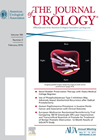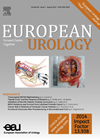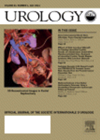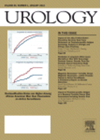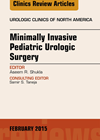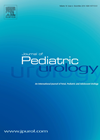
Journal Reviews archive for July 2015
SUSPEND suspended MET
This review is on the recent groundbreaking evidence on medical expulsive therapy (MET). MET using alpha adrenergic blockers (like tamsulosin) are in regular clinical practice. Even though it is an off label prescription, it is well accepted and practised world...
HPV prevalence in invasive penile cancer and association with clinical outcome
Penile cancer risks can be increased by a number of causes such as smoking, phimosis, poor hygiene, multiple sexual partners and history of gential warts or other sexually transmitted diseases. It has been found that circumcised men have a lower...
Utility of biomarkers in the prediction of oncologic outcome after radical cystectomy for SCC
Squamous cell carcinoma (SCC) of the bladder is more commonly seen in Egypt due to schistosomiasis (bilharziasis) and accounts for 2% to 5% of all bladder tumours. Schistosomiasis is found in the bladder vasculature and leads to chronic inflammation causing...
BCG maintenance therapy not superior to induction alone
With the ongoing shortage of BCG remaining an issue for urologists in the UK and further afield, this topical paper presented the results of the CUETO study evaluating the outcome of a modified three-year BCG maintenance regimen versus induction therapy...
BPS – a diagnostic enigma
This article from a London teaching hospital presents the results of a Medline search about challenges in bladder pain syndrome. All the known definitions from the American Urological Association (AUA), European Association of Urology (EAU), etc. are given while the...
CROWN initiative – what is it about?
The editors of around 50 journals related to women’s health have joined forces to support the CROWN initiative (core outcomes in women’s health). The aim is to standardise the collection of outcomes for all trials in a specific dataset in...
RARP – novel uroflow stop test
More and more centres are doing robotic assisted radical prostatectomy (RARP) surgery for cancer of the prostate .This study from Montreal, Canada describes a simple and novel test to predict recovery of urinary continence after RARP. The uroflow stop test...
PFMT in males
Pelvic floor muscle training (PFMT) has been described since ancient times in Rome but Kegel popularised it to improve sexual and urinary health after childbirth. In the paediatric population, there is a paradigm shift towards biofeedback-based PFMT for lower urinary...
Near-infrared fluorescence in robotic surgery
This is a systematic review and critical analysis of the current evidence on the applications of near-infrared fluorescence (NIRF) in robotic urologic surgery. It uses indocyanine green (ICG), a sterile water-soluble dye which has been tested in various fields. In...
Rectal swab guided antibiotics for TRUS biopsy
This is a single centre retrospective study to examine the effect of rectal swab culture-directed prophylaxis on the incidence of prostate biopsy associated infections. Secondary objectives were to determine the rate of fluoroquinolone resistance and extended-spectrum beta-lactamase production in local...
Tackling stones in children: is it difficult to crack on?
The incidence of stone disease in the paediatric population has been increasing worldwide, particularly for the adolescent age group (12–17 years of age). In this article the authors discussed the evolutions of percutaneous nephrolithotomy (PCNL) and ureteroscopy (URS) in children....
Multidisciplinary consensus on the classification of prenatal and postnatal UT dilation classification system
There is a lack of evidence in the literature correlating prenatal and postnatal urinary tract (UT) dilation pathology because classification systems vary, differing descriptive terms are used, and because dilation is a dynamic process and uropathies present a spectrum of...


